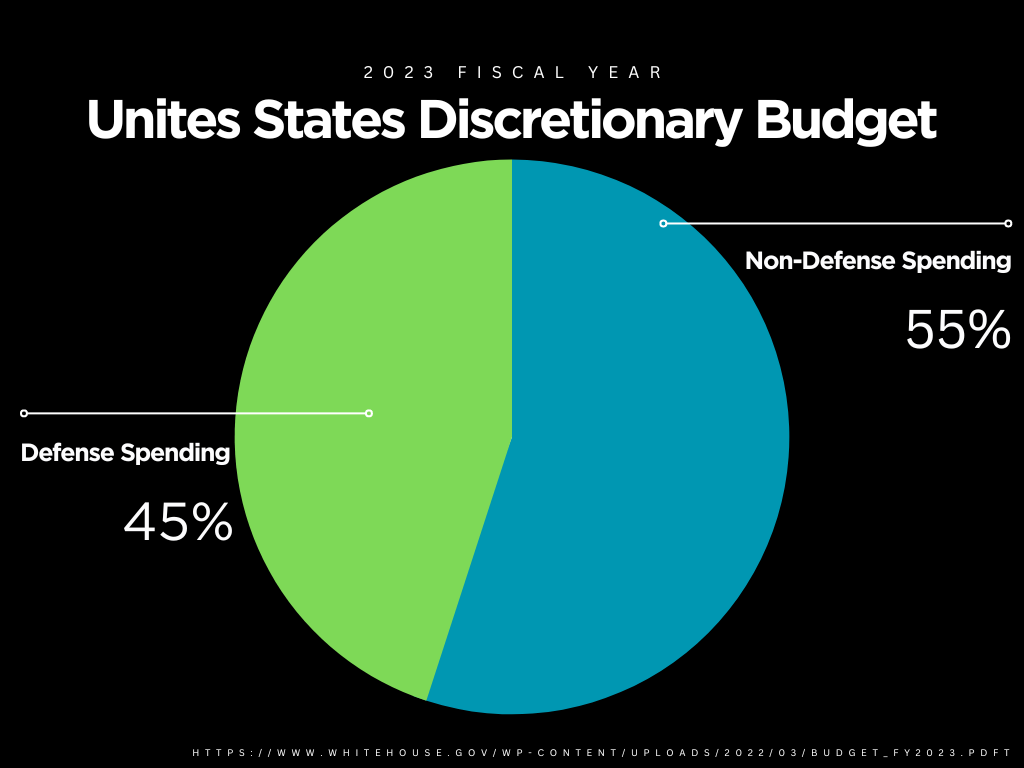The U.S government is supposed to assist the American people. However, the effectiveness of social programs are being limited by the high budget of the military.
When creating the United States budget, Congress must set a certain amount of money towards mandatory spending, including Social Security, Medicare, and Medicaid. Then the rest of the budget, known as discretionary spending, must be allocated towards either defense or non-defense. For the fiscal year of 2023, the U.S budget allocated $873 billion towards non- defense spending and $766 billion towards defense. This means a little over 45% of the discretionary budget for this year is going towards defense.
This spending is used to cover the costs of military training and planning, the purchase and maintenance of military machinery and equipment, pay, retirement, and most healthcare for military employees, along with the activities of the Department of Energy and FBI. All of these activities are important to the well-being of our nation but the problem is the significant amount of waste and unnecessary expenditures.
One example of this waste is the fact that the company TransDigm has repeatedly overcharged the Pentagon for spare parts, on occasion over 3,800% over the sales price. In total, billions of dollars have been lost to this up-charge alone. There is nothing administrators can do about this, because of rules regarding sales. Oversight officials are unable to compare the prices they pay for versus what the product costs normally.
Congress is also allocating money to projects that aren’t necessary. According to the Pentagon, they funded more than $58 billion worth of military projects that were not requested by the Pentagon administration last fiscal year alone. Some of this money was sent to help Ukraine with disaster relief, but some was spent on weapons and warships not requested by the military.
So what areas should we give this extra money to?
According to the European’s Union Copernicus Climate Change Service, this August was the hottest on record, with only July 2023 being hotter. A study done by the UN found that by 2030 climate change will be irreversible. The United States already has money allocated towards helping fight this crisis, but more resources could still be used, both to help long term effects and in the short term those who need resources and protection from these heat waves and increase in natural disasters.
One of the biggest arguments for having a defense budget this large is that it creates jobs, therefore fueling the American economy. However, a study done by economist Heidi Garrett-Peltier found that money spent in wind development created 21% more jobs and when the money was spent on elementary and secondary education 178% more jobs.
Other government programs that assist with things such as health care, cost of food, homelessness, cost of childcare, and tuition assistance need to be funded more as well. An estimated 60% of Amercians are living paycheck to paycheck, while 23% of Americans have medical debt and one in five have student loan debt. Many Americans would benefit from more money allocated towards these programs rather than defense.
Overall, Congress needs to gradually cut money from unnecessary and wasteful military programs and use the money more effectively in order to help the American people.














